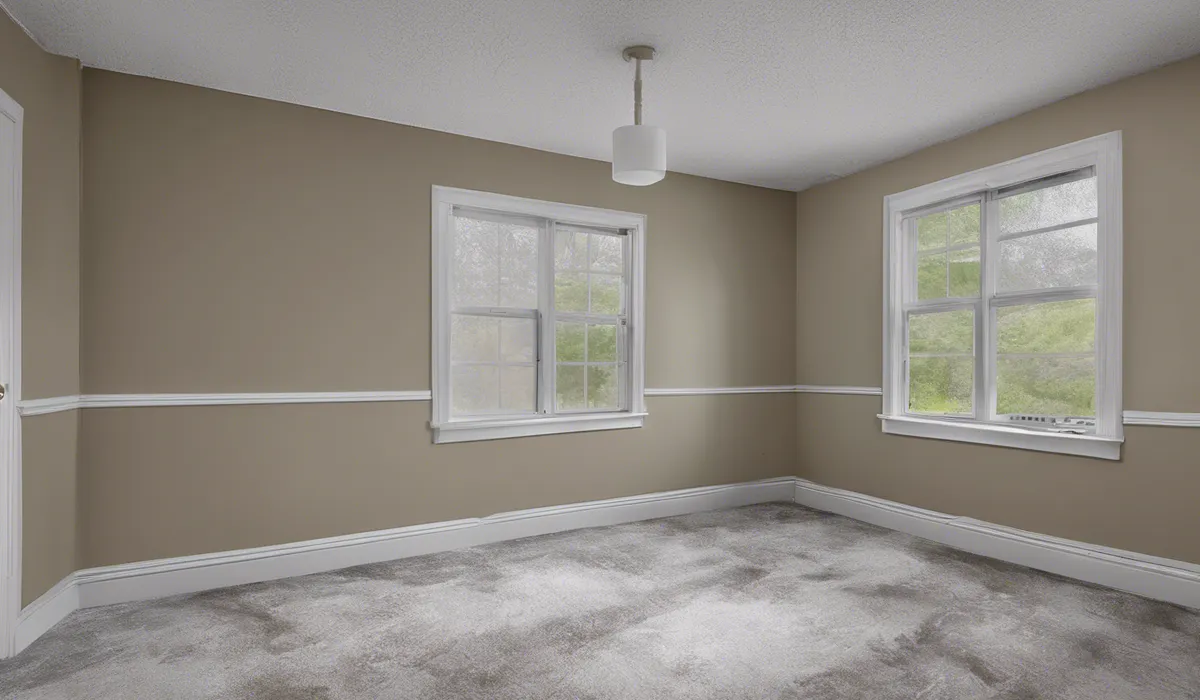Renters insurance may cover mold damage if it’s a result of a covered peril, such as water damage from a burst pipe. However, coverage for mold can vary by policy and insurer. It’s essential to review your policy or consult with your insurance provider for specifics.
Understanding Renters Insurance Coverage

Definition of Renters Insurance
Renters insurance is a type of policy designed to protect tenants living in a rented property. It’s a safety net that covers unexpected events which could lead to financial loss.
This insurance typically includes protection for personal belongings, liability claims, and additional living expenses if the rental becomes uninhabitable.
Standard Scope of Coverage
Personal Property Protection
This aspect of renters insurance safeguards your belongings against theft, damage, or destruction.
It can cover everything from electronics to clothing, ensuring that you can replace or repair items without significant out-of-pocket costs.
Liability Coverage
If someone is injured in your rental or you accidentally cause damage to another’s property, liability coverage can protect you from legal and medical expenses.
It’s a crucial component of your policy that can save you from financial distress due to lawsuits or claims.
Additional Living Expenses
Should your rental become temporarily unlivable due to a covered peril, renters insurance can cover your additional living expenses.
This coverage helps pay for temporary housing and other living costs incurred while your rental is being repaired.
Common Exclusions in Renters Insurance Policies
Natural Disasters
Events like earthquakes and floods are typically not covered by standard renters insurance.
These natural disasters require separate policies or endorsements for coverage.
Pest Infestations
Damage from pests such as insects or rodents is generally excluded. Renters are often expected to take preventative measures to avoid these types of problems.
Mold General Stance
Mold is tricky when it comes to insurance coverage. Many policies do not cover mold damage as it’s often associated with long-term neglect or pre-existing issues.
However, there are exceptions based on the cause of the mold, which we will explore in the next section.
Mold Coverage Under Renters Insurance

Situations Where Mold is Covered
Mold as a Result of a Covered Peril
When mold results from a sudden and accidental covered peril, such as a burst pipe or the aftermath of firefighting efforts, your renters insurance may provide coverage.
The key is that the mold must be a direct result of an incident that is explicitly included in your policy.
The Importance of Prompt Reporting and Documentation
Quick action is vital when dealing with mold. Reporting the incident and documenting the damage as soon as possible can help ensure that your claim is honored.
Time-stamped photos and detailed notes can be crucial in substantiating your claim.
Limitations of Coverage Caps and Exclusions
Even if mold is covered, there are often caps on the amount the insurer will pay. These limits are in place to manage the costs for insurers, which means you may not be fully reimbursed for extensive mold damage.
Policy exclusions also play a role in determining whether mold damage will be covered.
Situations Where Mold is Not Covered
Negligence or Lack of Maintenance by the Renter
If the mold growth is due to your neglect or failure to maintain the property, such as not addressing a known leak, your insurance company will likely deny your claim.
Regular upkeep is a renter’s responsibility.
Mold Due to Flooding
Flooding is a common source of mold, but standard renters insurance policies do not cover flood damage. For such protection, you would need a separate flood insurance policy.
Pre-existing Mold Conditions Before Policy Inception
Any mold that was present before your insurance policy began is not covered. Insurers only cover mold resulting from incidents that occur during the policy period.
Best Practices for Renters Dealing with Mold

Preventive Measures to Avoid Mold Growth
Regular Cleaning and Maintenance
Keeping your rental clean and well-maintained is the first line of defense against mold. Regular inspections and cleaning of areas prone to moisture, like bathrooms and kitchens, can prevent mold from taking hold.
Using Dehumidifiers and Proper Ventilation
Dehumidifiers can help keep humidity levels in check, making it less likely for mold to grow.
Ensuring proper ventilation, especially in areas like the laundry room or where steam is generated, is also key.
Immediate Action on Water Leaks and Spills
Addressing leaks and spills immediately can prevent moisture from seeping into areas where mold can thrive. Fast action can make all the difference in preventing mold growth.
Steps to Take if Mold is Discovered
Documentation of Mold Presence and Damage
If you find mold, document everything. Take pictures and make notes of where the mold is located and how extensive it is.
This information will be invaluable when you make your insurance claim or discuss the issue with your landlord.
Professional Mold Assessment and Removal
Consider hiring a professional to assess and remove the mold. They can provide a thorough evaluation and ensure that the mold is removed safely and effectively.
Communication with the Landlord and Insurance Company
Keep the lines of communication open with both your landlord and your insurance company.
Notify them as soon as you discover the mold and follow their instructions for how to proceed.
Importance of Reviewing and Understanding Your Insurance Policy
Knowing Your Policy’s Specifics on Mold Coverage
Take the time to understand what your renters insurance policy says about mold. Knowing the details can help you take the right steps if you ever need to file a claim.
Considering Additional Coverage or Riders for Enhanced Protection
If you’re concerned about mold, you may want to consider additional coverage. Riders or endorsements can provide broader protection and peace of mind.
Working with Your Landlord on Mold Issues
Landlord Responsibilities vs. Renter’s Responsibilities
Understand the division of responsibilities when it comes to mold. Landlords are typically responsible for structural issues, while renters must take care of routine maintenance.
How to Negotiate Mold Remediation with Your Landlord
If mold remediation is needed, approach your landlord calmly and with clear evidence of the issue. Negotiate a plan for addressing the mold, keeping in mind your rights and responsibilities as a tenant.
FAQs About Renters Insurance and Mold Coverage
Does renters insurance typically cover mold damage?
Renters insurance may cover mold damage if it is caused by a peril that is covered under your policy, such as water damage from a burst pipe.
Can I get renters insurance that specifically includes mold coverage?
Some insurers may offer specific coverage for mold, but it can vary by policy. You need to check with your insurance provider or review your policy details.
What causes of mold are covered by renters insurance?
Coverage for mold often depends on the cause, such as accidental water overflow or discharge, which are typically covered perils under renters insurance.
Will my renters insurance cover mold damage if it was caused by a flood?
Most renters insurance policies do not cover flood-related damage, including mold that results from flooding. Separate flood insurance would be required.
How can I make sure I have mold coverage in my renters insurance policy?
To ensure you have mold coverage, review your policy’s declarations page for details and speak directly with your insurance provider to clarify coverage options.
Final Thoughts
Renters insurance might offer coverage for mold damage, but it typically hinges on the causation by a covered event, such as water damage from sudden incidents like a burst pipe.
Mold coverage is not uniform across policies or insurers, so it’s crucial to examine your policy closely or engage with your insurance provider to understand the specific provisions of your coverage.
